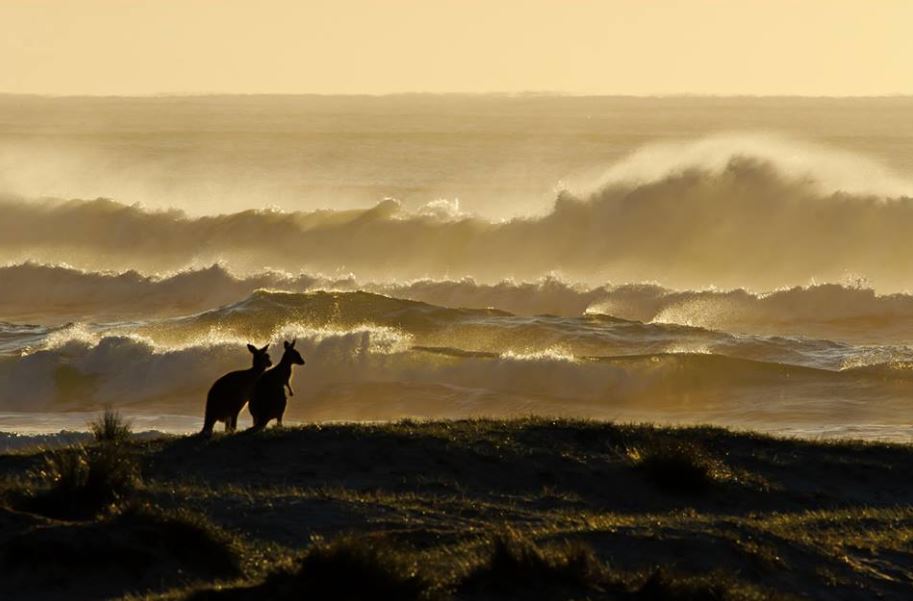
The Eurobodalla is a spectacular mix of rural and coastal landscapes. Photo: Eurobodalla Tourism.
Eurobodalla Shire Council is still waiting for final approval from the NSW Planning Minister for its Rural Lands Strategy, despite the previous minister saying it would be among the first documents he signed after the state election.
The then Minister Anthony Roberts visited the region in March. Mayor Liz Innes told Region Media at the time, “he was very clear in saying that he is now confident in signing it, and that, if elected, it will be the first document that he signs.”
It seems the new Planning Minister, Rob Stokes is taking a different approach much to the delight of those who have rallied against the land-use document.
A spokesperson for the Minister says, “The Department of Planning, Industry and Environment is carefully assessing the merits of the Local Environment Plan for rural lands in Eurobodalla.”
“During the consultation, the Rural Fire Service (RFS) raised concerns about bushfire safety and more than 40 environmental objections were lodged.
“We have been working with Council to resolve outstanding concerns.”

Brohdan Thompson, Mayor Liz Iness, Minister Anthony Roberts. Other side of the table, Heath Thompson, Amanda Thompson, Cheryl Blessington (Nathan Blessington there but not in photo), Member for Bega Andrew Constance, Graham Thompson, Huon and Sarah Thompson – in Tilba, March 2019. Photo: Supplied.
Kathryn Maxwell, Co-Convenor of the Nature Coast Alliance says with northern parts of the state currently on fire the Government is right to be cautious about allowing new developments.
“Rob Stokes as Planning Minister is a great improvement because he’s actually got post-graduate qualifications in planning,” Ms Maxwell says.
“In meeting with his Chief of Staff, we had a sense that they understood the significance of state agencies raising concerns.”
Government departments and agencies have been involved in the drafting of the strategy over nine years, including the Rural Fire Service, NSW Fisheries, Office of Environment and Heritage (OEH), and Local Land Services.
“In November 2018, 23 oyster farmers and industry investors also sent a statement of concern to the NSW Planning Minister requesting that he reject the Rural Lands Strategy,” Ms Maxwell says.
In his submission on behalf of the Office of Environment and Heritage, Director of Regional Operations, Michael Saxon wrote, “Given that none of the changes that we suggested in our 2016 submission on this planning proposal have been adopted, we still retain a number of objections to the proposal.”
OEH objections relate to known threatened species habitat and the impacts clearing and incompatible land uses could have on species like the Swift Parrot, Greater Glider, Glossy Black Cockatoo, and Bangalay Sand Forest, as well as significant Aboriginal sites.
The minister also received over 500 submissions from residents and community organisations, submitted in August last year.

Kangaroos at dawn on the Eurobodalla coastline. Photo: Eurobodalla Tourism Facebook.
Speaking again to Region Media in the last week, Mayor Liz Innes says, “representatives from the Department, NSW RFS, OEH and Council have met on several occasions, which has seen a majority of the objections withdrawn.”
“More recently, Council has been requested by the Department to prepare a draft Rural DCP (Development Control Plan) as has always been proposed, to introduce the biodiversity mapping into a DCP and to address the remaining issues of NSW RFS.
“The draft Rural DCP is proposed to come into effect in conjunction with the sign off of the Rural Lands planning proposal.”
Cr Innes says the remaining concerns of the NSW RFS will be addressed in the Rural DCP.
“Council has been frustrated with the time taken for the LEP amendment to be finalised, and continues to receive representation from the community frustrated with the delays,” the Mayor says.
“Delays have been caused as a result of objections which on the whole have been proven to be without merit, and have largely been withdrawn through this drawn-out process.
“There are a number of people in our community desperate for the Rural Lands planning proposal to be finalised, having spent numerous years working with Council to see that the planning provisions over rural lands in Eurobodalla are more appropriate, allowing property owners to adapt to changing trends, and capitalise on the economic potential of our area while protecting the environmental values.
“The biodiversity and bushfire management legislation and policy that currently applies will continue to apply once the LEP amendment is finalised. It is unfortunate that people with apparent vested interests and agendas have and continue to circulate misinformation,” Cr Innes says.
Kathryn Maxwell says the Nature Coast Alliance understands there needs to be some flexibility, “but not the scale of development that might be allowed.”
“If the Minister amended the strategy to reflect the submissions of the various agencies then it would be a very good document.
“There is plenty of land for development without needing to clear more.
“It’s a good thing the minister is taking his time.”

Sydney Rock Oysters, a quintessential taste of summer on the Far South Coast. Photo: NSW DPI.
Region Media asked the Planning Minister a range of questions but his department declined to comment other than the statement provided.
Cr Innes says she is confident the process will be finalised soon.







